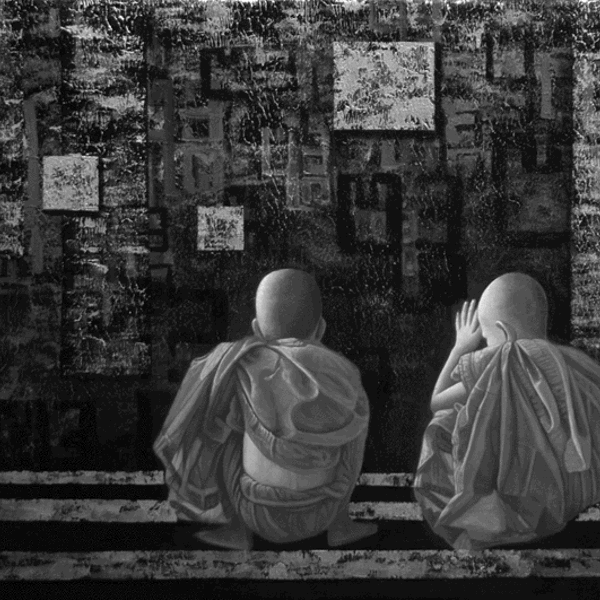The paradox of Myanmar is that its military, more indirectly than directly, almost wholly controls the driving economic engine behind the country’s newfound access to global commodities and media. Those who benefit are connected, in some way, to top generals or other upper-ranking officers. This poses a quandary to Myanmar’s masses: Deal with the devil to better one’s family or suffer silently as the world passes by.
And pass by it will. According to Amnesty International over 2,100 political prisoners are still languishing in Myanmar’s jails, with over 1,000 locked up in the past year alone. Many sit in solitary confinment; some are denied medical treatment. Myanmar is one of the only countries to be publicly denounced for human rights abuses by the otherwise confidential and neutral International Committee of the Red Cross.
In late August, the UN’s special envoy to Myanmar, Ibrahim Gambari, visited. It was the 37th visit by a UN special envoy. Aung San Suu Kyi, the head of the opposition who has been under house arrest for 13 of the past 19 years, refused to meet with him to protest the lack of progress. In ill health, she is now refusing to see her doctor to drive home the same point and is reportedly refusing food. I was in the country at the time, and Gambari’s visit barely elicited a peep from the many Burmese I spoke with.
According to Mark Farmaner, director of the Burma Campaign UK, the number of political prisoners has almost doubled since Gambari first visited two years ago and proclaimed the regime had a new page with the international community. “There is not a single reform or any progress to show for it,” said Farmaner. “Gambari’s visits are no longer about his own initiative now, it is all about preparing the group for when Ban Ki-moon visits in December. Twenty years of talking about talking is over. We need to see real concrete progress.”
The Myanmar government’s road map toward what it calls “disciplined democracy” is supported by China, Russia, and its neighbors in Southeast Asia. Elections have been set for 2010. In May, just after cyclone Nargis killed 134,000 of its citizens, the regime held a referendum on the new constitution, which passed with an approval rate of 92.4 percent. These results were largely denounced as a sham.
GREEN GOLD
The purpose of my latest trip was to report on the country’s booming jade industry, largely sustained by recently wealthy Chinese consumers. Jade plays a prominent role in Chinese culture and lore, and is often given as a present during engagement ceremonies. For the Beijing Olympics, gold, silver, and bronze medals were constructed with rings of jade on the back.
Just before the start of the Beijing Olympics a report co-released by US and Thai-based activist groups the All Kachin Students and Youth Union and 8-8-08 for Burma called for a global ban on Burmese “blood jade.” The groups accused the jade mines of being “plagued with deplorable working conditions, an HIV/AIDS epidemic, and environmental destruction.”
One morning I went to the Ministry of Mines in Yangon seeking official permission to travel to Hpakant, the main jade mining town in northern Kachin state. Greeted by half-dressed soldiers lounging idly in the front parking lot, 20 minutes of general confusion ensued until a ranking officer came by and told me the ministry had moved to Naypidaw, the new multi-billion dollar concrete bunker capital built in the middle of a jungle where Myanmar’s leadership moved suddenly and without warning in November, 2005.
I then flew to Mandalay, in the middle of the country, and took a slow, rickety 24-hour train to the Myitkyina, the regional capital of Kachin state, where the Japanese and Americans fought fierce battles in the Second World War. From there, together with two guides, I made a 16-hour journey to the small city of Hpakant on the back of a small, cheap Chinese motorcycle. Leaving around noon, we rode through the night across medieval landscapes—a tableau combining the worst of Goya and America’s Wild West—where abandoned wooden oxcarts and shuttered towns stared blankly, their vacant streets surrounded by jungle. The half-destroyed dirt roads were pockmarked with massive craters, many as much as two feet deep and filled with water from the seasonal rains. In some places, the mud was so thick and soupy, we had to walk our motorcycles. Ancient hulking trucks puttered along in the mud, some getting mired in the muck for days. At one collapsed bridge, people simply sat and waited while the army organized villagers to get chainsaws and start construction on another. Road signs along the way announced, like a cruel joke, “Government has arranged for road repair from each company.”












